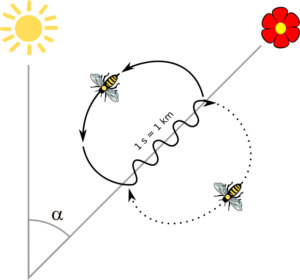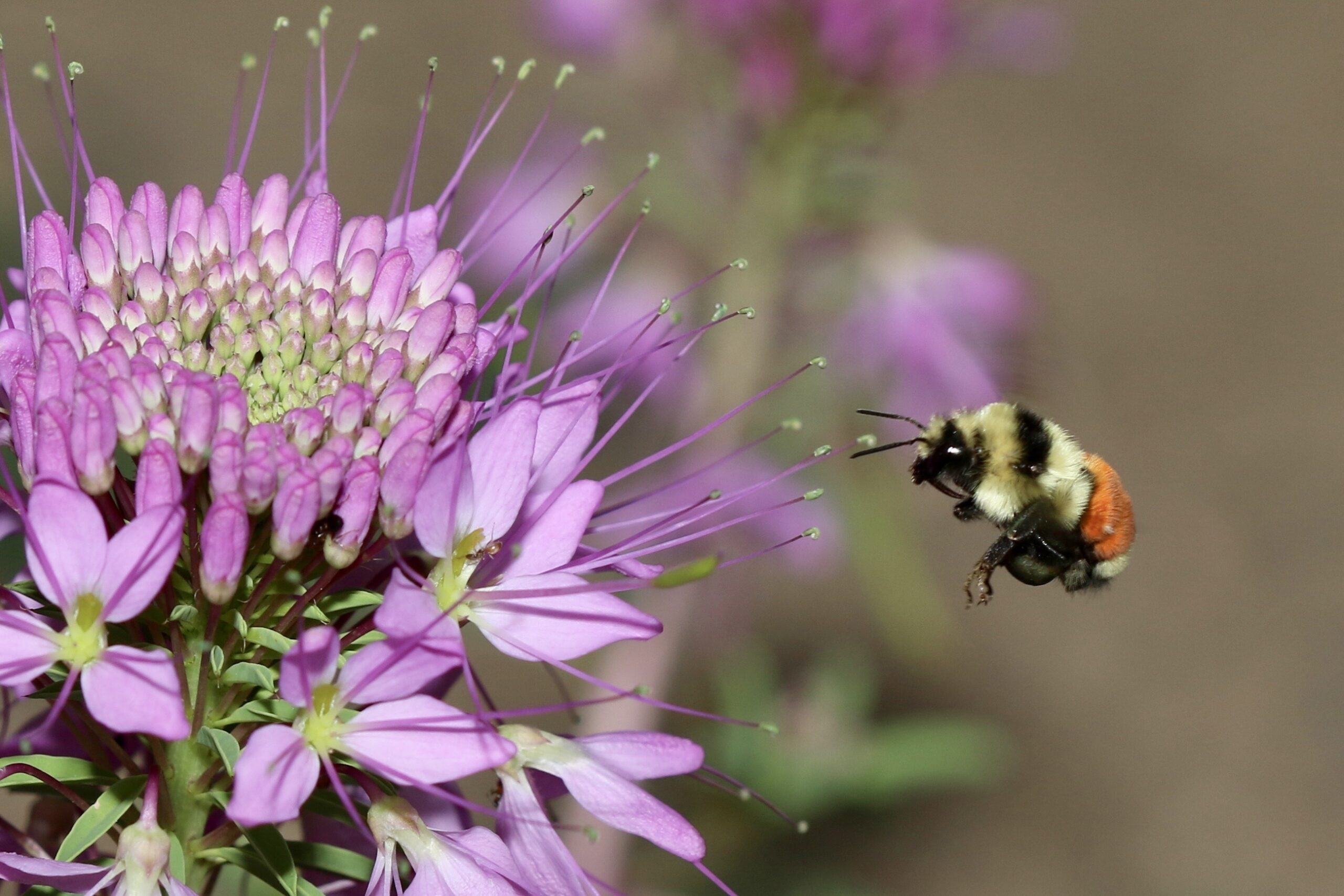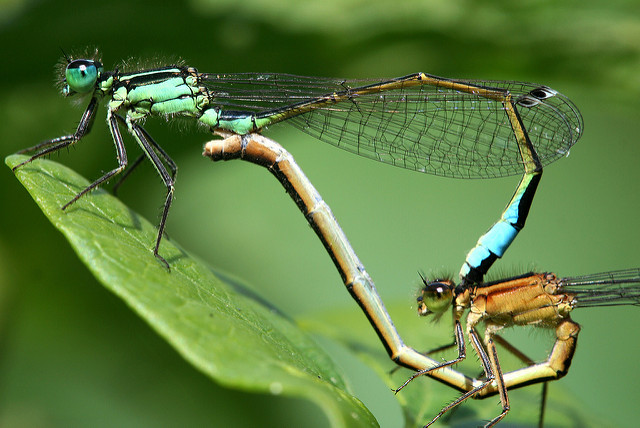Anybody who has walked outside on a hot summer day and heard the cacophonous ticks, rattles and clicks of insect calls could imagine that there must be something being communicated in all that clatter. While insects produce sounds through their normal activities, such as the buzz of wings in flight or mandibles chewing, often specific behaviors produce sounds that signal a variety of information to the surrounding area. Insects can create sounds through various methods whether they be stridulation (rubbing the body, as in cricket and grasshopper calls), percussion, vibration, click mechanisms or air expulsion. In fact, the level of sophistication in these sounds can be rather surprising.

Take for instance the way in which a honeybee (Apis mellifera) forager is able to describe the direction, distance and aspects of the quality of found food sources to other members of the hive based on the sounds, vibrations and length/direction of its “waggle dance”.

Many insect sounds often serve as signals to other members of the same species, as in mating calls. The purpose of the calls, besides providing location, is to relay information regarding the sender’s readiness/quality as a mate. Female fruit flies tend to prefer males that produce short song pulses with high carrier frequency. These high frequency pulses have been shown to positively correlate with the survival rate of offspring. Males announcing their location to potential female mates can also serve the purpose of telling other males where they are not welcome. However, in some species of bush crickets, cicadas and grasshoppers, males have a habit of aggregating in large groups and producing sounds in a chorus. By gathering together, these males can increase the effective range of their calls and decrease the individual chance of predation.

While many kinds of sound are used for interspecific communication, some sounds exist to signal to other animals. Startle sounds are a kind of acoustic produced when insects try to confuse predators. The Peacock butterfly (Inachis io) generates an ultrasonic click that confuses the ability of bat predators to echolocate their prey. Mating calls can also be exploited by crafty mimics. An Australian bush cricket (Chlorobalius leucoviridis) is able to imitate species-specific responses of female cicadas to male mating calls. As the unfortunate suitor hears the correct sound response to know it is time to seek his lady, he finds himself on a someone’s dinner plate instead. Mutualistic relationships benefit from sound communication as well. Some insects, such as treehoppers (Publilia concava), develop in association with tending ants. The ants protect the treehoppers from predators while harvesting the sugary excretions (honeydew) of these homopterans. When a treehopper is threatened, the insect produces a specific vibration that travels through substrates and rouses the ants as well as any alarm call.

The full diversity and complexity of communication through sound and vibration that insects employ is quite staggering. As researchers seeks to unravel these intricacies, evidence is being compiled that humans are effecting the arthropod world with our own noise pollution. Anthropogenic noise can impair communication between insects, distorting their ability to detect prey and predators or successfully find mates. In a recent article published in Ecology & Evolution, a group of scientists sought to investigate how the presence of broadband noise (sound that is distributed widely across audible ranges) produced by natural gas extractors influenced the surrounding arthropod communities.

The researchers set up their experiment in the San Juan Basin of New Mexico, the second largest gas basin in the United States. This area has seen quite a lot of anthropogenic disturbance since the discovery of natural gas there in 1921. By placing pitfall traps near well pads both with and without gas compressors, the researchers were able to compare how noise affected arthropods across 10 sites. The scientists found that various groups of arthropods responded to background noise in different ways. All but one group surveyed were less abundant at sites that had higher levels of noise or featured gas compressors. Oddly, collected insects of the leafhopper family Cicadellidae seemed to be more abundant at sites with high compressor and background noise. Possible explanations for this occurrence could be that the leafhoppers are attracted to the noise, with the compressors acting as a sensory trap. Another explanation is that the high levels of noise could deter bats due to their reliance on echolocation, with the high noise level acting as a predator shield. Fortunately, the results of the study showed that community turnover was not occurring at either family or genus level, but the researchers put forth the idea that finer scale measurements and more collections were necessary to determine if species composition was changing.
One thing is for certain: the response to noise pollution in an arthropod group is unique to that group’s evolution and more research is needed to deduce what kind of adverse effect, if any, humans are having on these communities. The potential for species to be deterred from an area can vast unforeseen consequences. Arthropods serve a multitude of ecosystem functions, acting as pollinators, seed dispersers, herbivores, decomposers and prey. If the arthropod community changes drastically, the complex suite of interactions among prey, predators and mutualists may not survive the transition.
Literature Cited
Bunkley, J. P., McClure, C. J. W., Kawahara, A.W., Francis, C. D. and Barber, J. R. (2017), Anthropogenic Noise Changes Arthropod Abundances.” Ecology and Evolution 7, no. 9: 2977–85. doi:10.1002/ece3.2698.
Chapman, R. F. The Insects: Structure and Function. Cambridge University Press, 2012.
Further Reading:




